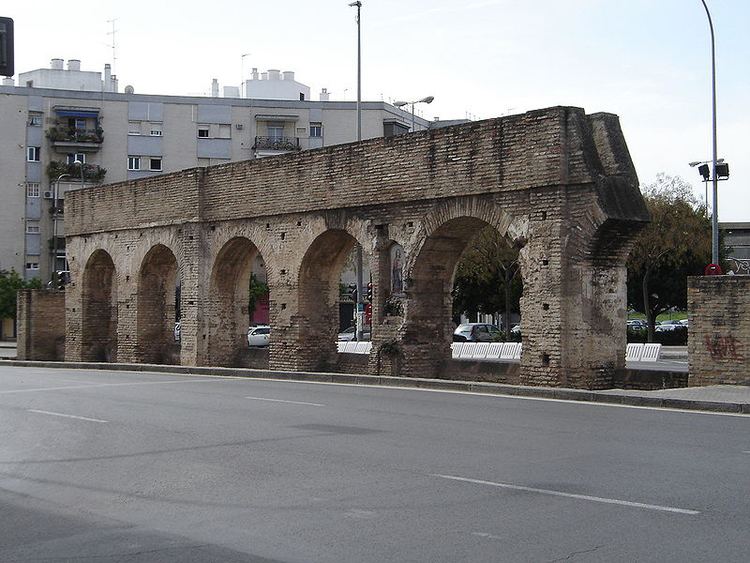 | ||
The Caños de Carmona are the remains of an originally Roman aqueduct which was later rebuilt by the Almohads, which it existed in the city of Seville (Spain) in full activity until its demolition in 1912.
Contents
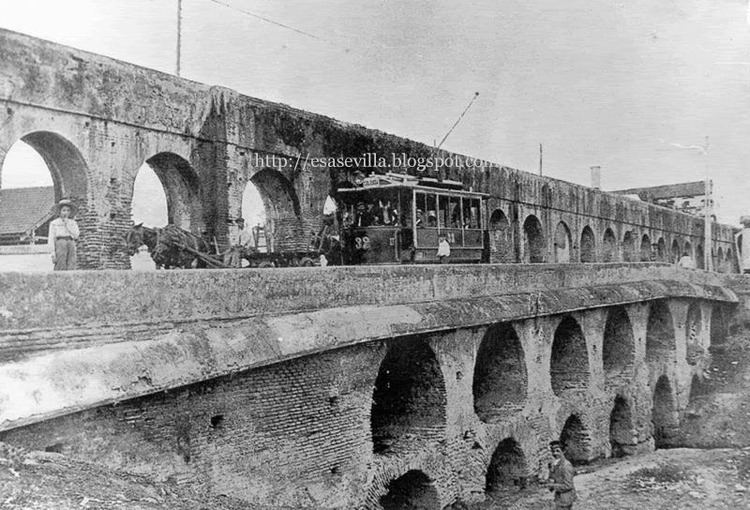
It was a 17.5 km. long aqueduct that began from the town of Carmona and finished in Seville.
The brick was used for construction as the unique material, consisted of approximately 400 arches on pillars in the area was in sight of all, in some places with an upper body also of arcades.
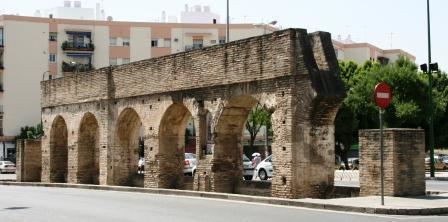
Los ca os de carmona 2 mpg
History

Data of the time that were built the Walls of Seville, approximately between the years 68 and 65 B. C., a date that was as Treasurer of the city Julius Caesar, during the Imperial Rome, confirm it in the surviving sections and the remains found in the explorations in the tunnels or "mines" of Alcalá de Guadaira; being rebuilt for first time by Almohads between 1171 and 1172 because of its ruinous state.
Near the 13th century, when starting the Granada War again they made repairs on its pipes and arches.

At the end of 14th century again was reformed, adding to it new arches that determined the number is known in the present.
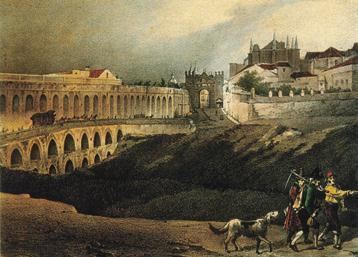
Where beginning today is a mystery, there is doubt that was in the town of Carmona (although in a plane of Spain and Portugal of 1810, contains an "ancient aqueduct" that unites precisely Carmona with Seville, but is knows that supplied the spring of Santa Lucía, located in the town of Alcalá de Guadaira where the pipes passing through long underground tunnels and vaults carved into the rock or made of bricks (some of them weighing six kg), along which had access to the surface to air the driving and allowed to enter and out the workers who kept, counting in this area about twenty accesses, and ended at the Puerta de Carmona (ancient gate of the walls, torn down in 1868), where there was a large reservoir from which the water is distributed to various parts of the city, being enjoyed primarily by the aristocracy, religious institutions, Casa de Pilatos, Huertas del Rey (Orchards of the King) and Alcázar of Seville plus some fountains and public baths.
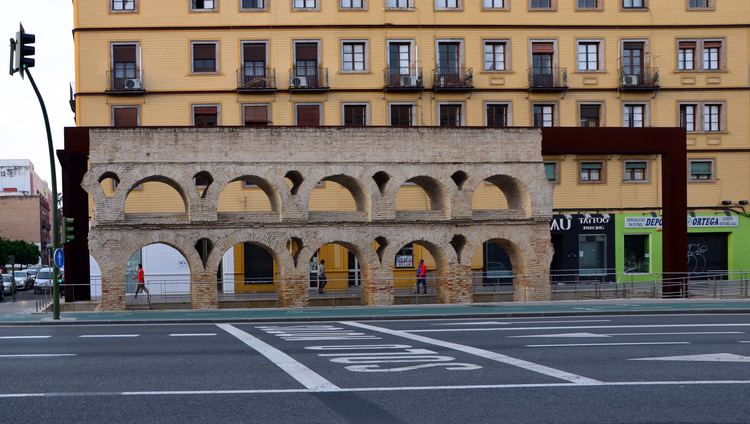
In a photography of 1927 is noted the blind arches of the first body, three years before its expropriation for the final widening of the street Oriente in connection with the construction of the Puente de la Calzada.
With respect to the second arch, this survives today thanks to that in 1911 constituted the closing of the old Orchard Alcantarilla de las Madejas, privately owned, and took the name for being close to the Sewer of las Madejas. Being a private enclosure, the municipal pickaxe not went through this. In 1930 it rose the Puente de la Calzada (bridge), for which the Delegation of Public Works expropriated the owner, Mr. Borrero Blanco, a piece of land in its northern boundary in which were the remains of the aqueduct. In 1930 apparently there was another feeling in local politicians, it was granted a pardon, but not the section that had to be demolished to lift the bridge, and that connected with the first section or arch, part this of the Alcantarilla de las Madejas.
Since the late 19th century residents of the Puerta de Carmona and the La Calzada neighborhood complained to the City Hall of the dangerousness of the last section of the Caños, because its arches served as shelter for immigrants, homeless hopeless and criminals. The problems of health and social coexistence, together with the ensanches plans of the rounds of the city, made the Consistory consult the Monuments Commission of the central administration. Madrid approved the plan, answering the aqueduct "is vulgar work, without artistic features, devoid of archaeological interest". Nothing helped the defense made by José Gestoso. The demolition began on January 26, 1912 and although it lasted several months, was not complete; in 1959 were torn down the now last demolished sections at be built the neighborhoods of La Candelaria and Los Pajaritos. To date in which proceeded to tear down the aqueduct to make the area of the city "more viable", and the aqueduct was still in perfect working activity until that days.
Have only stand three small sections exposed along the road that occupied, then known as Calzada de San Benito (after Calzada de la Cruz del Campo, then Oriente street, and now Luis Montoto street). For conservation was the intervention of the Pontifical Marquis of San José de Serra, Carlos Serra and Pickman, who from his responsibility as a Member of the Commission of Artistic Monuments of the Province, fight in the conservation of ancient Roman remains popularly known as "Caños de Carmona" under the imminent threat of demolition as well, thanks to his artistic sensibility and the position he held at the time, are now preserved these ruins of great value in a central Sevillian avenue for admiration and enjoy of everybody. At present the section of the Caños de Carmona that is in best condition is there because for years was part of the pillars of bridge of La Calzada, which stood on the street until returned to discover after its demolition in the early 90s of last century.
